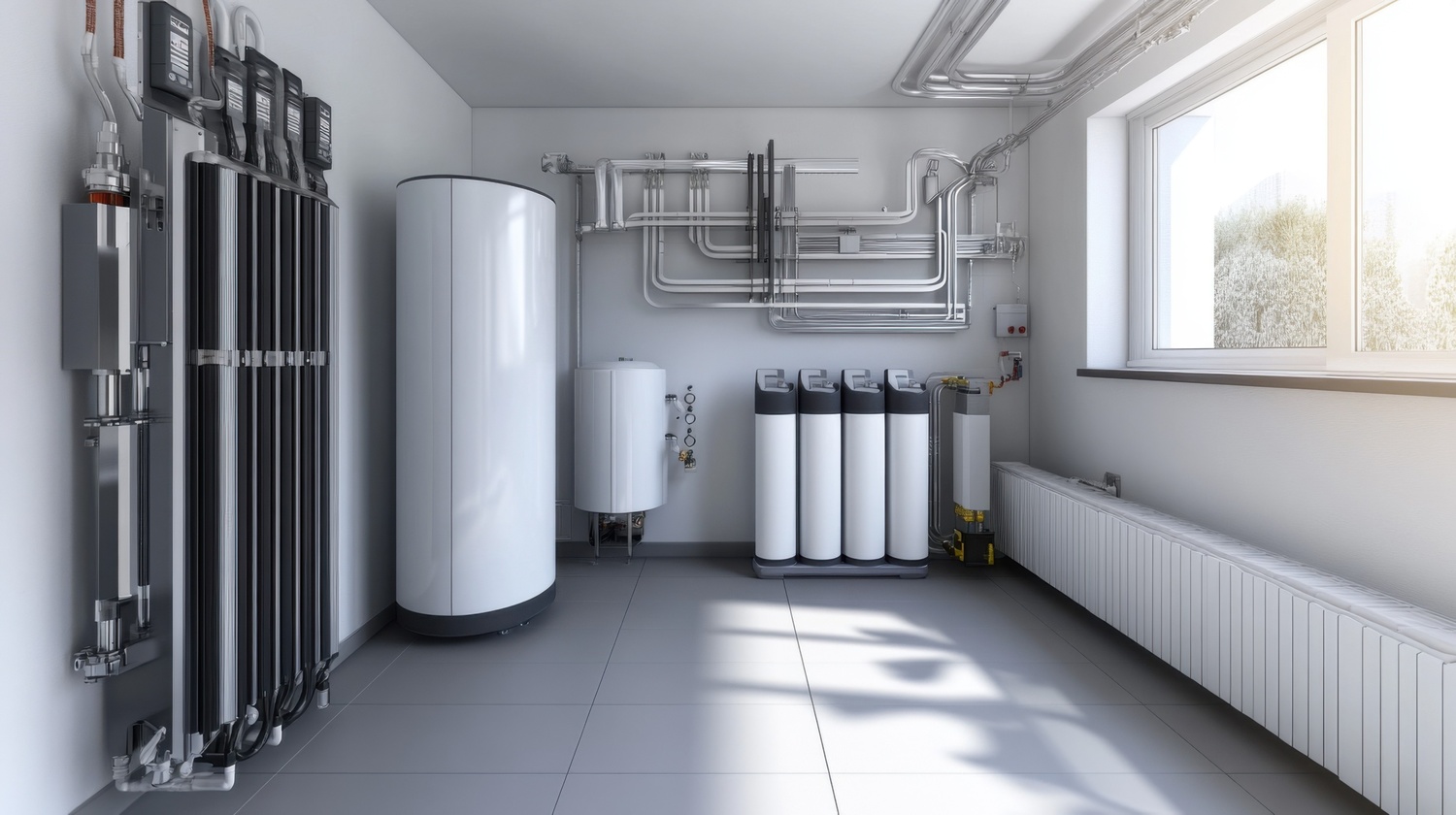Heating and cooling account for a significant share of your household’s energy use. If you’re exploring alternatives to traditional systems, heat pumps might already be on your radar. These systems move heat rather than generate it, offering a different approach to keeping your home comfortable. Still, they involve a different set of considerations from what you might be used to.
This guide breaks down what makes heat pumps worth considering, what you might spend, and how to figure out if they’re the right choice for your home.
How Heat Pumps Work in Practical Terms
Heat pumps don’t create heat, but instead they transfer it. In cold months, they pull heat from outside air or underground and send it indoors. When it’s hot, they work in reverse. This is possible through a refrigerant system and compressor inside the unit.
There are different types, but the most common type for homes is the air-source heat pump. It draws heat from the air and requires an outdoor unit and an indoor air handler. Geothermal heat pumps, while more expensive, pull heat from the ground and offer higher efficiency.
Because they don’t burn fossil fuels, they don’t release direct carbon emissions. That alone makes them attractive for those trying to reduce their carbon footprint without sacrificing a comfortable temperature indoors.
Where a Heat Pump Makes Sense
Location plays a big role. In places with mild winters, heat pumps can supply nearly all the heating you need. In cold climates, performance depends on the model and insulation levels of your home. Some high-efficiency systems can still pull usable heat from outdoor temperatures as low as 5°F.
For homes in regions where gas heating is common, switching to a heat pump might seem like a major change. A gas furnace delivers powerful heat fast, especially in freezing temperatures. But newer heat pump technology is closing that performance gap.
Some homeowners also choose hybrid setups, where a heat pump works in tandem with a gas furnace. This allows the system to switch automatically between electricity and gas depending on temperature and efficiency.
Costs and What They Cover
A full heat pump installation can range from USD$3,000 to over USD$10,000. That wide range reflects differences in labor costs, system size, type, and complexity of your existing setup. Geothermal systems, for instance, often cost tens of thousands of dollars due to excavation requirements.
Your total installation costs might also include ductwork modifications, electrical upgrades, and removal of your old system. The larger your home, the bigger the system required. A small two-bedroom home under 1,500 square feet won’t need the same setup as a 3,000-square-foot house.
A heat pump hot water system adds another dimension. Instead of using gas or electric resistance to heat water, it captures ambient heat and transfers it into your water tank. This approach reduces energy demand over time and works well in households with steady hot water usage.
Operating Costs Compared to Traditional Systems
Once installed, a heat pump can reduce your monthly energy bills, especially if you’re switching from a basic furnace or portable air conditioners. These savings come from the unit’s high efficiency rating. Some systems provide three times as much heat energy as the electricity they use.
But results vary. In areas with low electricity rates or strong incentives for clean energy upgrades, the energy savings stack up faster. In contrast, areas with cheap natural gas might not see the same return.
Utility companies sometimes offer rebates or special programs that help offset upfront costs. These programs can significantly improve payback periods, especially if you’re replacing older, less efficient equipment.
Environmental and Lifestyle Benefits
Heat pumps contribute to lower carbon emissions, especially in regions where electricity generation is moving toward renewable sources. As cleaner energy replaces fossil fuels, households using heat pumps play a direct role in reducing dependence on carbon-heavy systems. Over time, the environmental benefits of switching to an electric system grow stronger.
Heat pumps also provide consistent, quiet operation. Unlike a gas furnace that cycles on and off in bursts, heat pumps maintain a steady indoor temperature. For households used to space heating with plug-in units or older gas systems, this can make a noticeable difference.
Who Should Consider a Heat Pump?
Not every home is well-suited for a heat pump. Older homes with outdated ductwork or poor insulation may need upgrades before switching. Homes in areas with extremely cold weather may require a backup heating source. And homes with very low energy use might not save enough to justify the upfront costs.
That said, for many households, especially in regions with moderate temperatures, the shift makes sense. Heat pumps offer an efficient option that aligns with energy savings goals and long-term cost reduction.
Final Thoughts
Heat pumps represent one of the clearest examples of how advancements in technology are reshaping home heating and cooling. They’re not for everyone, but they can pay off under the right conditions. If your home’s heating system is due for replacement or your energy bills are high, they’re worth a closer look.
As always, results depend on your individual circumstances. A professional energy assessment can help clarify your home’s energy use and identify which upgrades will make the biggest impact.

